Simple, Quick, Custom Fit
Animal Harness
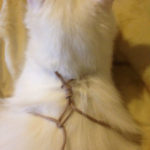 I have been making these easy harnesses for years. Cats are very agile and collars tend to be rather useless, unless they are strictly for looks. When taking your pet to the vet, it’s always best to have them leashed. If you have some paracord, light weight rope, strong string, ect..you can whip up a harness to keep your pet secure.
I have been making these easy harnesses for years. Cats are very agile and collars tend to be rather useless, unless they are strictly for looks. When taking your pet to the vet, it’s always best to have them leashed. If you have some paracord, light weight rope, strong string, ect..you can whip up a harness to keep your pet secure.
First take your cord and make a small loop at the end. The loop in photo is larger than recommended, to show detail.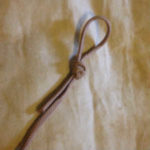
Now take the cord, wrap it around the animals neck and measure it to the shoulder blades. This is how big the neck loop should be. Remember, when you tie it, you will use quite a bit of cord in the knot, so measure your opening with anything and make sure it remains the size you want. It’s easy to make adjustments by loosening the knot. Once that loop is the right size, tuck the loose end from your first knot into the knot you just made. (see photo below)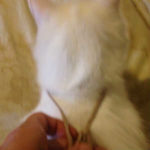
Place the loop you just made over the animals head and feed a loop through the first loop you made. Pull the cord loop open and place over their head and put the front legs through as well. Pull gently on the end of the cord to tighten and your good to go. Note, you can also put a knot in the cord that runs through the small loop to avoid over tightening and place another knot in the free end to prevent it from becoming too loose.
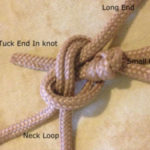
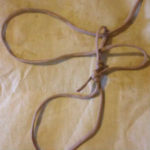
Tip
If your up to a challenge, you can use cord stops in place of knots to prevent it from being too loose or too tight. With the first loop being too small to fit the cord stop through, you have to actually make the first loop with the last loop (body) already going through it with a cord stop already attached. Easiest…the cord stop will keep it in place near the end of your cord. Then when done, slide it down to where you need it and then slip the cord stop on the cord where it will keep the loop from becoming too loose. If it is too loose and animal is unattended, it may be able to step out of the last (body) loop and then slip the head loop.
You can loosen the first loop big enough to fit a cord stop through it, then tighten it back up again. If doing this method, do not tuck in loose end until after making adjustments for the cord stop.